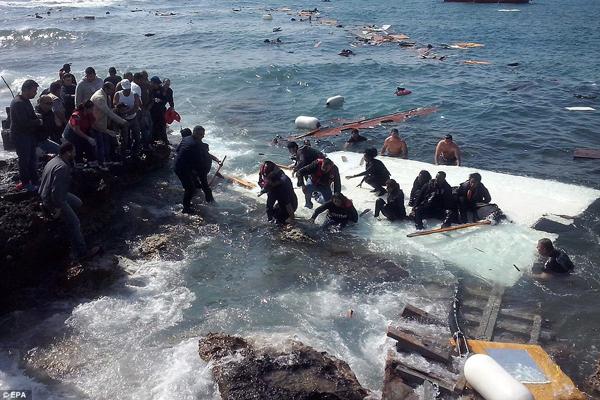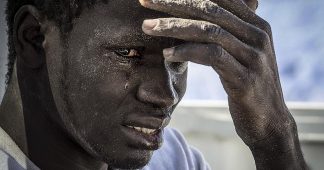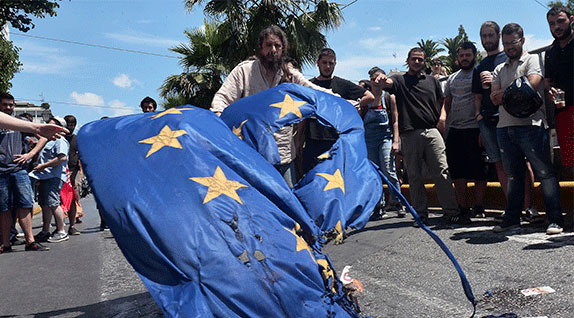The «migrant crisis» is currently diminishing in Europe, but will probably amplify dramatically in the next few years. The gigantic population displacements which are in preparation are the consequence of the on-going economic exploitation of Africa.
by Manlio Dinucci
From the United States to Europe, the “migrant crisis” is causing bitter interior and international controversy about the policies which need to be adopted concerning the migrant flow. However, these movements are being represented by a cliché which is the opposite of reality – that of the “rich countries” obliged to suffer the growing migratory pressure of the “poor countries”. This misrepresentation hides its basic cause – the world economic system which enables a restricted minority to accumulate wealth at the expense of the growing majority, by impoverishing them and thus provoking forced emigration.
As concerns the migrant flow towards the United States, the case of Mexico is emblematic. Its agricultural production collapsed when, with the NAFTA (North American Free Trade Agreement ), the USA and Canada flooded the Mexican market with low-cost agricultural products, thanks to their own public subsidies. Millions of agricultural workers found themselves without jobs, thereby increasing the work pool recruited by the “maquiladoras” – thousands of industrial establishments along the frontier, in Mexican territory, possessed or controlled, for the most part, by United States companies, where salaries are very low and trade union rights inexistent.
In a country where approximately half of the population lives in poverty, this situation has increased the mass of people who want to enter the United States. This is the origin of the Wall along the border with Mexico, which was begun by the Democrat President Clinton in 1994 when the NAFTA came into effect, pursued by the Republican Bush, reinforced by the Democrat Obama, the same wall that the Republican Trump now hopes to complete along all 3,000 kilometres of the border.
Concerning the migratory flow towards Europe, the case of Africa is emblematic. The continent is rich in raw materials – gold, platinum, diamonds, uranium, coltan (or tantalite), copper, oil, natural gas, precious woods, cocoa, coffee and many others.
These resources, once exploited by the old European colonialist system with slave-type methods, are today being exploited by European neo-colonialism in collaboration with the African elites in power, a low-cost local work force, and interior and international control of the market-place.
More than one hundred companies listed at the London Stock Exchange, British and others, exploit the mineral resources of 37 sub-Saharan African countries for a value of more than 1,000 billion dollars.
France controls the monetary system of 14 African ex-colonies via the CFA Franc (originally the acronym of the “Colonies Françaises d’Afrique”, now recycled as “Communauté Financière Africaine”). In order to conserve parity with the Euro, these 14 African countries are obliged to pay the French Treasury half of their monetary reserves.
The Libyan state, which sought to create an autonomous African currency, was demolished by the war of 2011. In the Ivory Coast (a CFA region), French companies control the greater part of the commercialisation of cocoa, of which the country is the world’s top producer – the little producers are left with hardly 5% of the value of the end product, such that most of them live in poverty. These are only a few examples of the neo-colonial exploitation of the continent.
Africa, presented as being dependent on foreign aid, in fact pays foreign countries a net annual forfeit of about 58 billion dollars. The social consequences are devastating. In sub-Saharan Africa, where the population is greater than one billion souls, and is composed of 60% children and young people between the ages of 0 and 24 years old, about two thirds of the inhabitants live in poverty and amongst these, about 40% – which is to say 400 million – live in conditions of extreme poverty.
The “migrant crisis” is in reality the crisis of an unsustainable economic and social system.
Translation: Pete Kimberley
Source: Il Manifesto (Italy)











